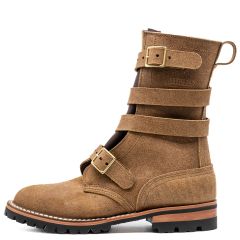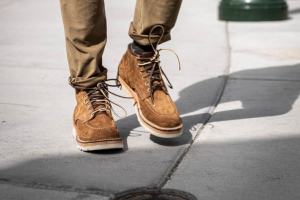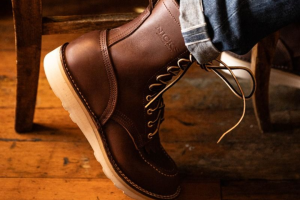What Are Tanker Boots?
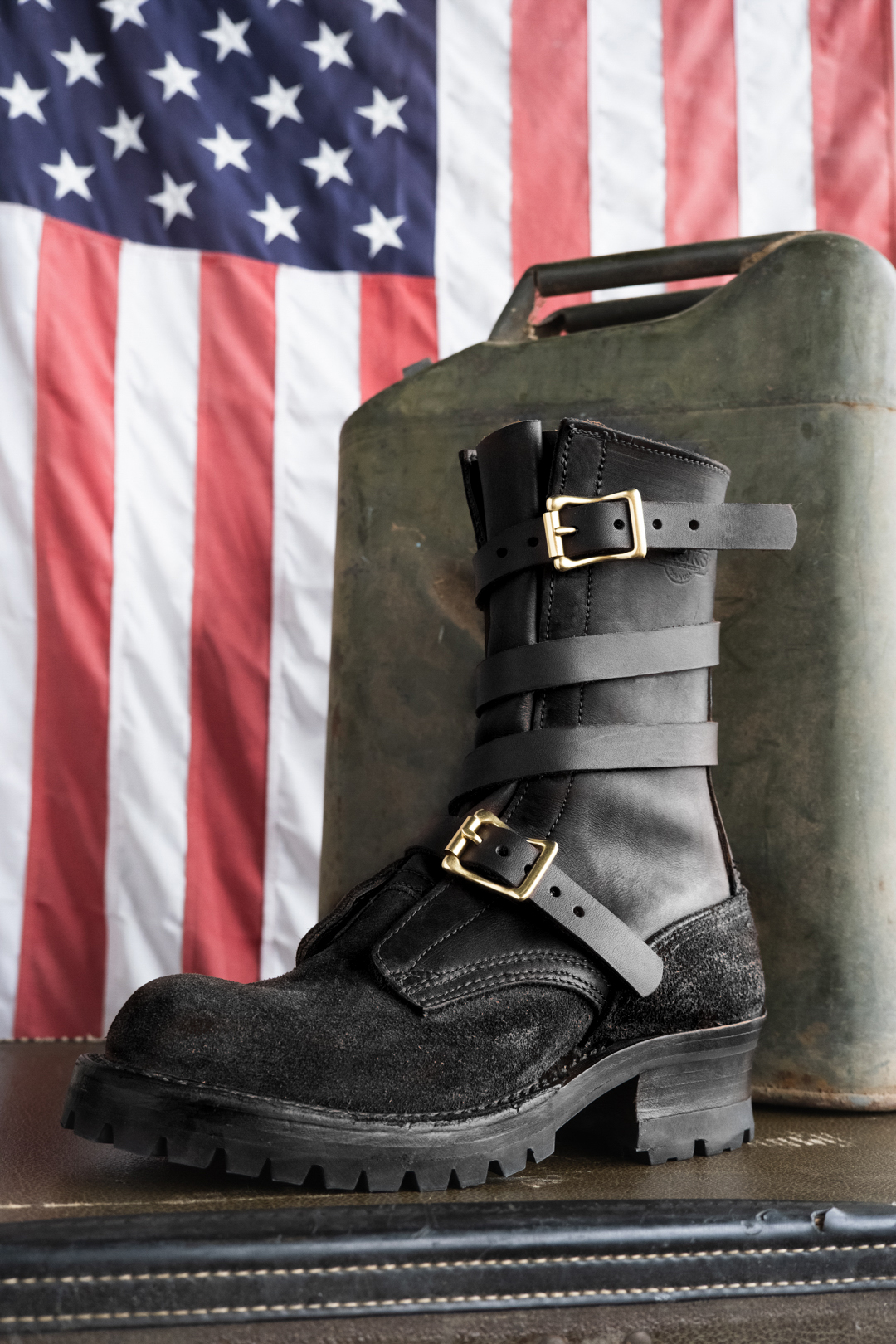
Tanker boots are a military boot style that was designed for and worn by tank crews. They've caught on for civilians as work boots and casual boots, because of some qualities of the design.
Tanker boots are halfway between pull-on boots and laced boots, in that they have more support than pull-on boots but don't have laces. Equal parts form and function!
Tanker boots are still in military service, as the purpose for the boot design still exists. Beyond use inside a tank, tankers are a great boot design for someone who wants a tough boot that goes on and comes off more easily than a typical work boot.
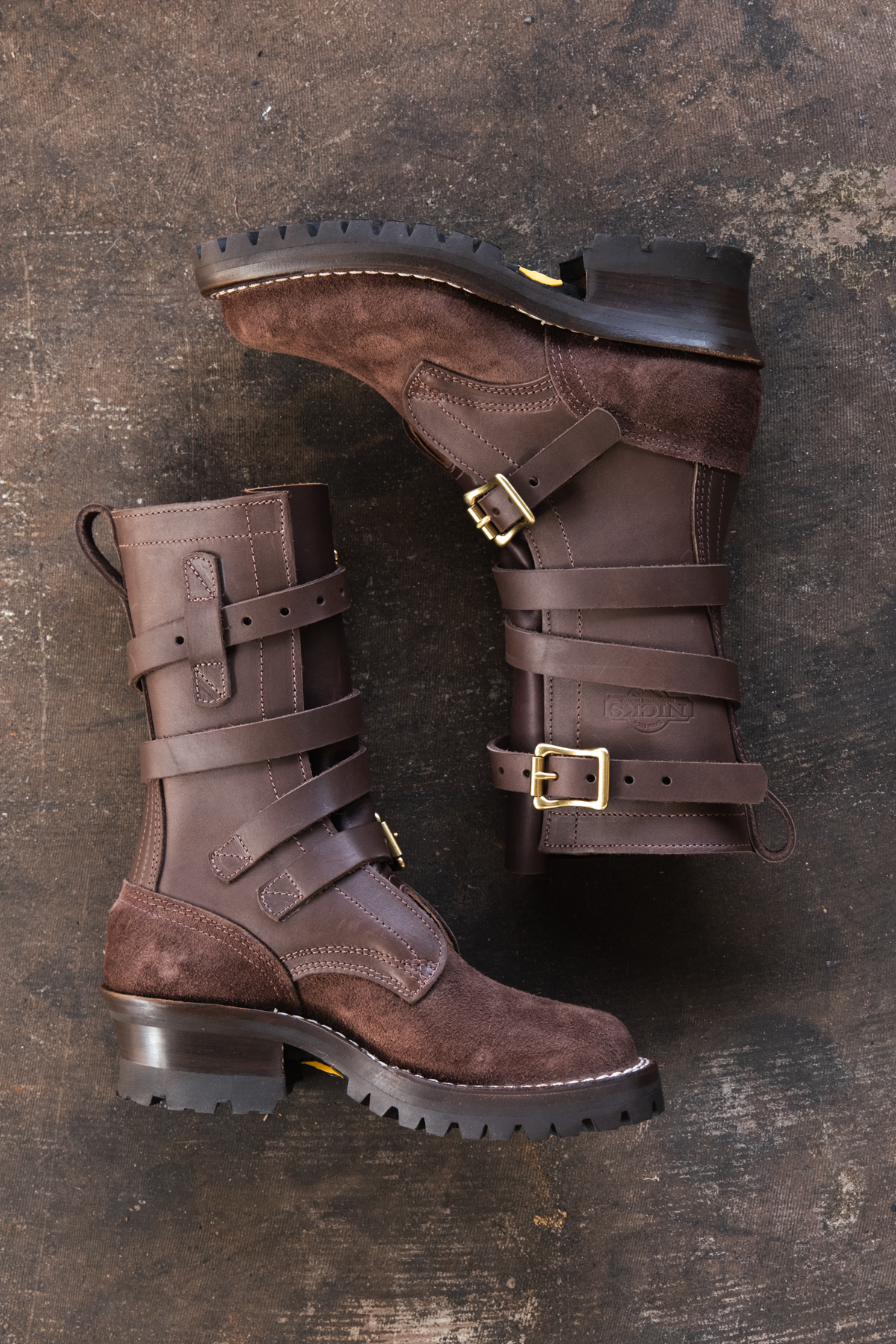

Tankers Invented And Then Wore Tanker Boots
Tanker boots as a boot style were invented between the world wars, a couple of years before the start of World War II (depending on how you define that; the history books mostly say the invasion of Poland) and therefore about four or so years before the USA entered the war.
Tanker boots are very similar to the combat boots of the era, bearing a striking resemblance to Corcoran jump boots. The key difference is that instead of laces, tanker boots use a leather belt that wraps around the boot to fasten them.
The boot was literally designed by tankers for tankers, with the design being a collaboration between the Dehner boot company and a son of a gun named George Patton. That's right; "Old Blood and Guts" himself.
Dehner - they're still around - specializes mostly in equestrian boots, but also manufacturers duty boots for police and military personnel. Patton, as it happens, came from the cavalry and started his career at the end of the mounted cavalry era, so that's almost certainly how he knew about the company.
The design priorities were to come up with a boot that was easy to get on and take off, offer more support than typical riding boots, but also be suited for life inside a tank.
Laces could get caught on the machinery inside the tank, so they're actually a safety hazard. A leather upper is more fire-resistant than nylon or canvas boots, and the boots are easier to deal with when caked in mud.
Tanker boots are also looser on the feet than laced boots, which means tankers don't have any loss of circulation if they stay seated for long hours in the field...which is common in wartime.
And they work. The tanker boots that our troops wore in World War II worked so well that a tanker boot design of some kind has remained in issue for tank crews ever since, even into the present.
Who Can Wear Tanker Boots?
There are some rules in the military about who can wear tanker boots. As far as we could tell, Army regulations don't specifically forbid anyone from wearing them, but gives unit commanders latitude to prohibit specific boots or require certain boots for duty.
So it would really depend on your unit specifically; just because they're authorized in a blanket sense doesn't mean it's okay for you!
Outside of military use...obviously anyone could wear tanker boots if they so choose…and a quality pair of tanker boots would be a great choice of work boots, motorcycle boots, or just for general wear.
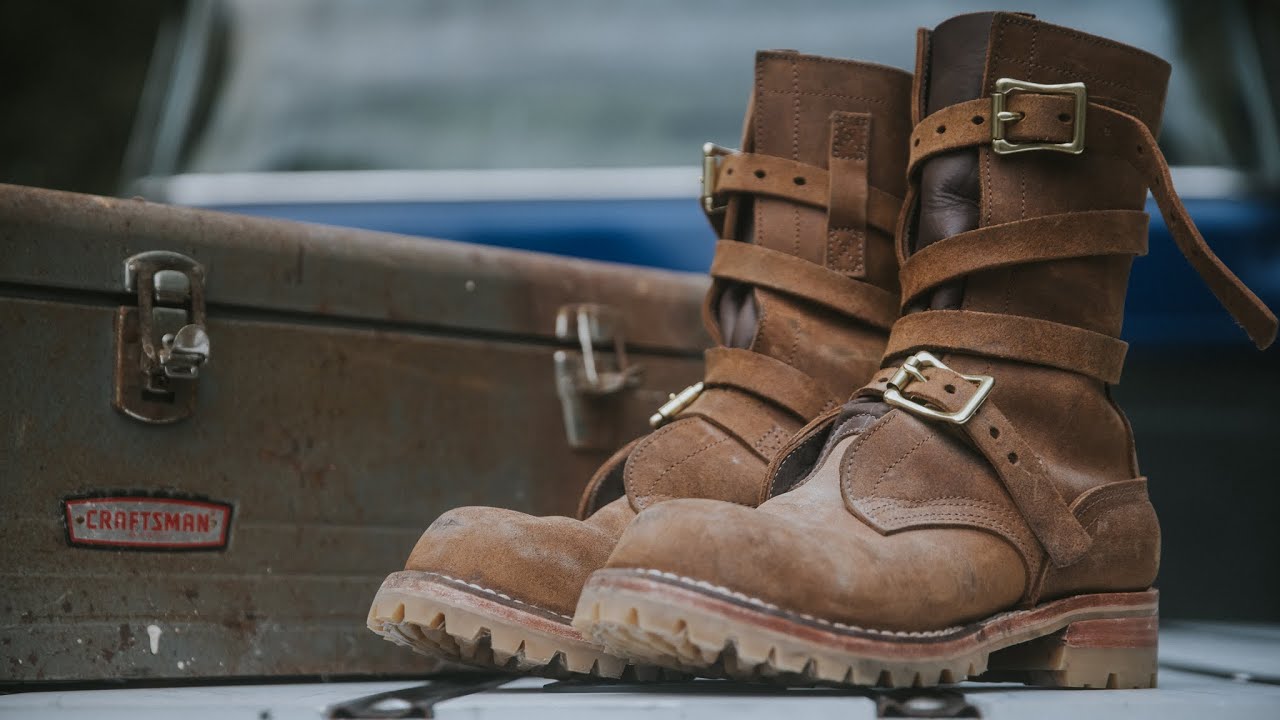

Are Tanker Boots Comfortable?
With quality construction, tanker boots are incredibly comfortable. They bridge the gap very well between a laced boot and a pull-on, making them comfortable and convenient, as well as having decent ankle support for a non-lacing boot.
The heel block gives the boot good support, and - if made correctly - provides all the arch support you'll need for all-day comfort. The straps allow you to set the heel into the heel cup, keeping the heel from lifting as you walk around which is the classic failing of pull-on boots.
The straps let you set the heel, giving you some ankle support but not quite the same amount as a laced boot. Lacing over the foot and going up the lower leg set the foot into the boot to support the ankle, so it won't quite be the same.
They make an excellent most-purpose field boot, so long as you don't need the utmost of ankle support. And darned if they don't look great doing it.
Key Takeaways:
- Tanker boots were literally designed for and worn by tank crews but have become popular among civilians as work boots, motorcycle boots, and most-purpose field boots due to their decent ankle support and all-day comfort.
- These boots use leather belts instead of laces, which can become a workplace safety hazard. They also feature leather uppers that are sturdy, durable, and more fire-resistant than nylon or canvas.
- Tanker boots bridge the gap between pull-on and laced boots, providing more support than pull-on boots but without the laces.
- The design of tanker boots came from a collaboration between the Dehner boot company and George Patton.
FAQs
What is the point of tanker boots?
Tanker boots are designed to protect the wearer's feet and ankles from injury while providing excellent support during physically demanding activities. They also promote proper circulation to the feet, ensuring the wearer's feet remain comfortable even during extended periods of use.
Who is authorized to wear tanker boots?
Most armed forces personnel (Army, Air Force) are authorized to wear tanker boots unless restricted by their unit commander. However, it’s best to check with your branch commander first. As for civilians, anyone can wear tanker boots.
Why are army tanker boots different?
Army tanker boots are designed to provide extra protection to the ankles, heels, and feet with a thicker sole and higher ankle support than regular boots. They are also easier to wear and remove, and looser on the feet for better circulation.
Do you have to be a tanker to wear tanker boots?
No. Anyone can wear tanker boots if they choose to since no specific law prohibits any individual from wearing these boots.
Are tanker boots waterproof?
Tanker boots are very water-resistant, but not waterproof. They are durable and designed to keep feet dry even in wet or muddy conditions.
How do you break in tanker boots?
Breaking in tanker boots is best done by wearing them for short periods of time, then gradually increasing the duration of wear until they're comfortable enough to wear all day.
We recommend wearing tanker boots with thick, high-quality socks to help prevent blisters and aid in the breaking-in process. Plus, they offer extra cushioning for added comfort.
What is the difference between safety shoes and boots?
The major difference between safety shoes and safety boots is the level of ankle protection and support they provide.
Safety shoes have a low-cut design that covers only the foot, while safety boots extend higher up the ankle to provide additional protection and support.
How do you prevent blisters in tanker boots?
Wearing padded, moisture-wicking socks can help prevent blisters in tanker boots.
Why do tanker boots not have laces?
As the name suggests, tanker boots were originally designed for tank crew members who needed to quickly and easily remove their boots in case of an emergency. Laces could get caught on the machinery inside the tank, so the laceless design allowed for safe and efficient removal of the boots.
Instead, they have adjustable leather straps that can be easily fastened and secured, providing a snug fit for the wearer's feet.
Why are boots important in the military?
Boots help military personnel protect their feet from environmental hazards, extreme weather conditions, and uneven or challenging terrain while providing support and stability while in the field.

